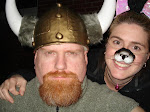Wednesday, September 24, 2008
Can you work through these four phases of forgiveness?
Friends:
I came across this in the Free Press this morning. I believe people of faith, like all people, often struggle with the issue of forgiveness. As yourself, if there is someone in your life who you need to forgive, if you can work through these four steps toward better health? Below I have listed the four phases of forgiveness. It asks, are you willing to:
Uncover the causes of your anger and recognize its impact on your health.
Decide to forgive. Recognize that it is your choice and make the commitment.
Work toward understanding, forgiveness and compassion.
Release yourself from your emotional prison and discover the freedom of forgiveness.
Source: "Forgiveness Is a Choice: A Step-by-Step Process for Resolving Anger and Restoring Hope," by Robert D. Enright (American Psychological Association, $19.95)
Is this helpful? Did the author leave something out? Let me know.
Be blessed.
Friday, September 12, 2008
How do you pray?
Friends:
One of the books I am currently reading is Body Prayer by Doug Pagitt. In this insightful read some postures for prayer are explained. Which one fits your style of prayer?
Many people are accustomed to closing their eyes and bowing their heads during prayer. For the originators of this practice, this was not an empty custom but a physical way of focusing of God. By their actions, these people of prayer showed that their immediate surroundings were not as important as God.
For other early believers, folding their hands during prayer was a statement that they would not hold onto anything else when they were praying. It was a physical way to say to God, “Your kingdom come, your will be done in my life.”
Still others pray with their eyes open, their faces turned up to the sky, and their hands spread wide. This posture indicates a willingness to accept all that God has made.
For pray-ers in the first century, it was common to pray facedown with one’s knees pulled close to the chest and one’s forehead touching the ground. Doing so put one close to the ground and in the most humble position possible.
The custom of kneeling and bowing one’s head in prayer is strengthened by the imagery of a person approaching a king to make a request. When doing this in prayer, the subject puts herself at the mercy of the King by exposing her neck, and act which shows her complete vulnerability to the Sovereign’s power.
The New Testament practice of placing hands on the one being prayed for is yet another physical act of faith and prayer.
Still others pray while walking or singing or standing.
Pagitt further points out that “From the beginning Christians have recognized that prayer is not simply a matter of words; it is an integration of all of life, through the body.”
How do you pray? Let us learn from each other new ways to mesh the body and spirit.
Thursday, September 11, 2008
Solomon's Porch Road Trip?
Jim Wallis, the author of the New York Times best-seller, The Great Awakening: Reviving Faith and Politics in a Post-Religious Right America, will be speaking in Detroit, MI.
On Thursday, September 18, at 7.30 p.m., Jim will give a keynote address at University of Detroit Mercy. Jim's talk, entitled "Faith in the Public Square," will cover religion and politics, and the upcoming presidential race. The event is free and open to the public and will take place at Calihan Hall on University of Detroit Mercy's McNichols Campus. An RSVP is required.
Sep. 18, 2008: Detroit, MI.An Evening with Jim WallisUniversity of Detroit Mercy (7.30 p.m.)4001 W McNichols Rd.Contact: Gary LichtmanTel: 313-993-1254
Thursday, September 4, 2008
Is your church tech saavy?
Info to share from Barna Report about technology:
16% of churches Podcast
26% of churches have social networking page (facebook)
56% of churches send e-messages to members and attenders
62% of churches have a website
-2008 Barna.org survey of U.S. Protestant Churches



